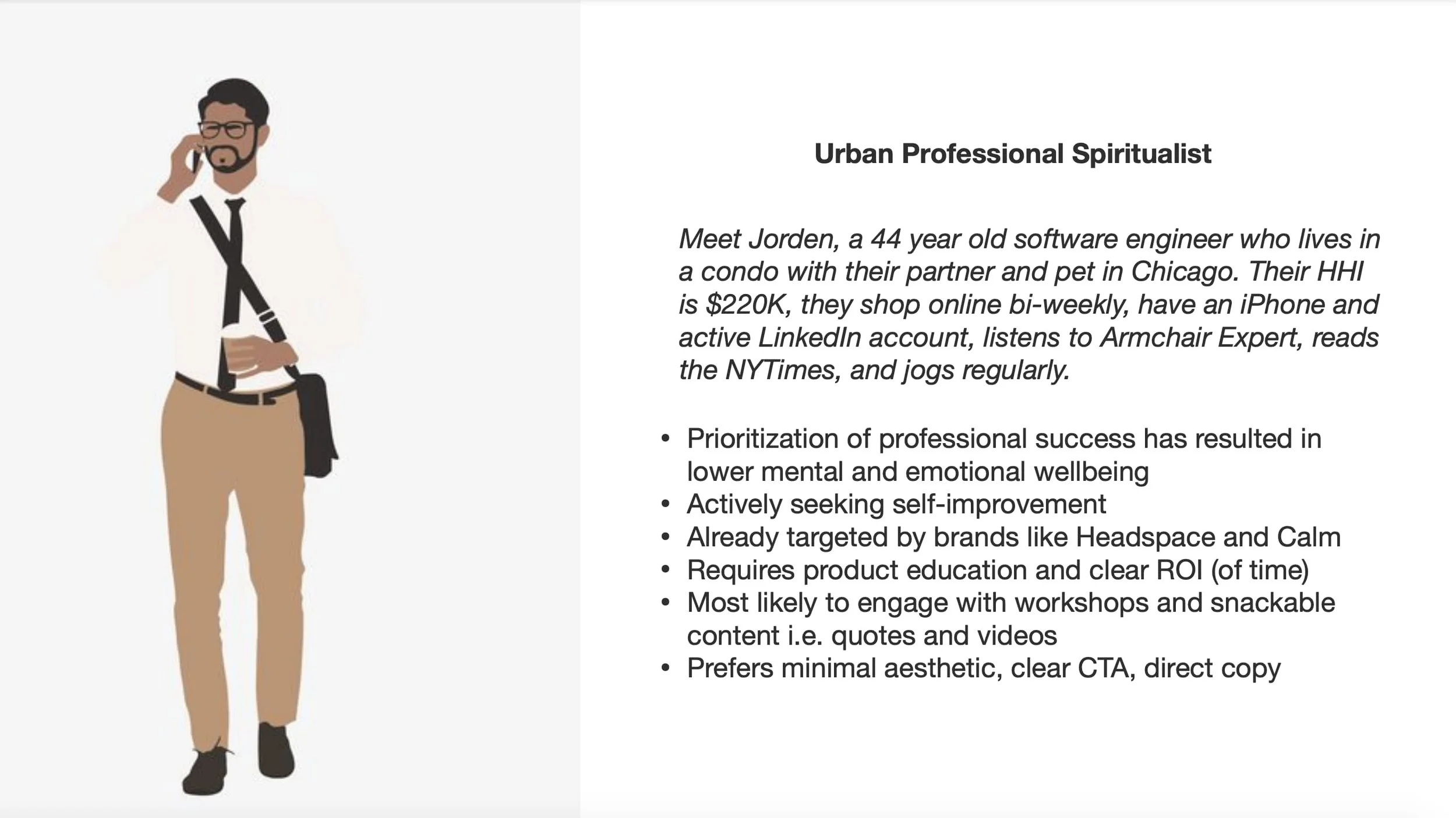A empathetic platform for self-discovery and emotional tooling
Overview
A significant portion of people are disconnected and seeking meaning. Findcenter made it their mission — through extensive research, curation, and code — to support those seeking answers. I was brought on to manage the rebrand and redesign the web experience in anticipation for public beta release and securing additional funding.
Problem
Mental wellness is on everyone’s mind, yet the abundance of information leaves people feeling overwhelmed. It’s fragmented, of varying quality, and hard to navigate.
What’s going on with our collective wellbeing at this moment in time? Anxiety and depression increased by 25% across the globe during the first year of the COVID-19 pandemic, and hospitals and doctor groups recently called mental health a national emergency. With these issues on the rise, searches for "mental health therapist" and "mental health help" reached record highs this year in the U.S.
How might we make self-help accessible, discoverable, and easeful?
How might we create a safe space on the internet to share and connect?
How might we empower people to navigate life's biggest challenges?
Goals
Crowdsourcing wisdom
The online portal houses 500,000 pages of articles, podcasts, videos, quotations, and books curated by an international cadre of book editors, health professionals, and other topic experts.
Emphasis on Empathetic ‘Sharing’
Almost every key screen of the app has a share button. This allows for a frictionless experience for users to save resources to their own toolkit and connect over a resource with their Findcenter community.
Big impact in small doses
Find self-care quick hits for busy schedules with curated collections of resources on topics ranging from anxiety relief to psychedelic healing. Users can peruse recommended toolkits or make your own.
Solutions
Insights
Competitive Landscape
In the initial phase of the engagement, our team spent time studying companies in competing spaces. We looked at direct competitors and also did analogous studies. By learning about the features these apps provide, noticing the patterns and evaluating how they differentiate themselves, we were able to gather a lot of insights.
We also spent a great deal of time reading reviews of the apps on the Play Store and App Store. This helped us get insights on what users are saying about the apps directly; understanding the reasons they either liked or disliked an app.
Custom Market Research
Through Feedback Loop, we performed market research to test viability of the offering. Our findings showed signals of interest:
89% interested in the topic of personal growth
85% interested in the topic of spirituality
83% who self-identified as “interested in spirituality” said they would regularly use this platform
67% are seeking information for dealing with life
User Personas
We created user personas based on our interviews to help us keep the goals, needs and pain points of users in sight. Each individual's demands are very different and therefore we spent a lot of time trying to understand their struggles really well.



Building Healthy Public Squares in the Digital Landscape
Because this product and its potential users desire a social component to the app, it requires more than just building a good product. It is the public square of the online landscape. With this in mind, we referenced New Public’s signals to aid our design thinking:
Inviting everyone to participate
Ensuring people’s safety
Encouraging the humanization of others
Keeping people’s information secure
Cultivating belonging
Building bridges between groups
Strengthening local ties
Making power accessible
Elevating shared concerns
Showing reliable information
Building civic competence
Promoting thoughtful conversation
Boosting community resilience
Supporting civic action
Still, it’s not necessarily the case that every social platform will be good for every person, or every use, the researchers say—nor should every platform necessarily seek to embody each of the criteria. We worked with Findcenter to select a few key criteria to consider for design decisions and we hope to do further user interviews to derive deeper insights into the priorities of the user base.
Ideation
Information Architecture & Wireframes
Based on the original design, we restructured the architecture of the platform. The earlier version of the platform had a lot of pages that were difficult to discover and organized haphazardly. We moved towards reorganizing and grouping similar types of topics into “Collections” to give user’s a easeful experience of entry for the first time or discovering new areas for exploration.
Brand Identity
To establish Findcenter’s brand, we partnered with Upstatement to establish the logo, typography, color family, art direction, and key messages we would infuse throughout the platform.
Iterations
Introspection


















